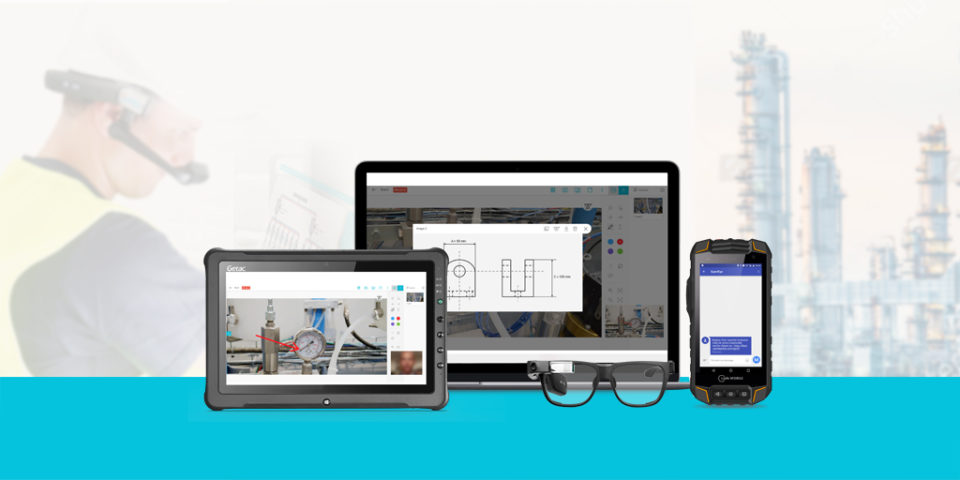When there is a breakdown in a production line, time is of the essence. To restart the work, operators must get the malfunctioning equipment up and running as soon as possible. In the past, a technical expert would have had to fly out to the site and physically inspect the equipment, guiding the on-site operators to resolve the issue. Today, with remote assistance this is no longer the case. Now, on-site operators can connect with technical experts virtually anytime, anywhere, through connected technologies.
Remote assistance solutions are built around 3 key functions: video conferencing, collaboration (whiteboard, screen sharing, annotations, etc.), and data storage. Here is a list of the 8 most important (additional) features your remote assistance solution should have to fulfill your various needs. With these capabilities, your company will be able to make decisions faster and decrease time to resolution.
- Guest invitation
Any remote assistance solution lets you collaborate in real-time with multiple participants from anywhere in the world. However, it is important to be able to invite third parties (e.g. supplier, subcontractor) to participate in your projects in real-time. To control who is using the platform, you should be able to provide temporary access to the solution sent by email or SMS.
- Confidential mode
If data confidentiality is important to your business, choose a solution that offers a confidential mode to avoid that any media can be saved during a call by a guest or any other participant.
- Data security
End-to-end data encryption should be a prerequisite to securely protect your data and protect sensitive information. Furthermore, if your company works with Protected Health Information (PHI), do make sure that the remote solution is hosted on servers that are HIPAA or HDS compliant.
- Multi-source video support
Your use case could require input from multiple connected cameras (smartphone, smart glasses, endoscope, echograph, UV camera, etc.) to get access to the right information. Look out for a plug and play solution.
- Remote camera management
To save time and provide better feedback the expert should be able to control the remote worker’s cameras and zoom in remotely on the areas he is interested in.
- Long runtime
Factory Acceptance Test and site audits for example can take a couple of hours in a row to thoroughly assess any discrepancies and non-conformities. A solution with a long battery life should therefore be privileged.
- Usage in low-bandwidth areas
A low bandwidth connection will severely slow speeds and makes video communications almost impossible. If you are frequently facing WiFi or mobile network connectivity issues, then a solution that allows you to change video frame rates to adapt to the limited available bandwidth is the one you should opt for.
- SSO compatibility
Your employees no longer need to remember application-specific passwords and sign in to each application. With Single Sign-On users only have to enter one set of credentials once to access company resources, web and SaaS applications such as a remote assistance solution. This greatly increases productivity while keeping data secure.

